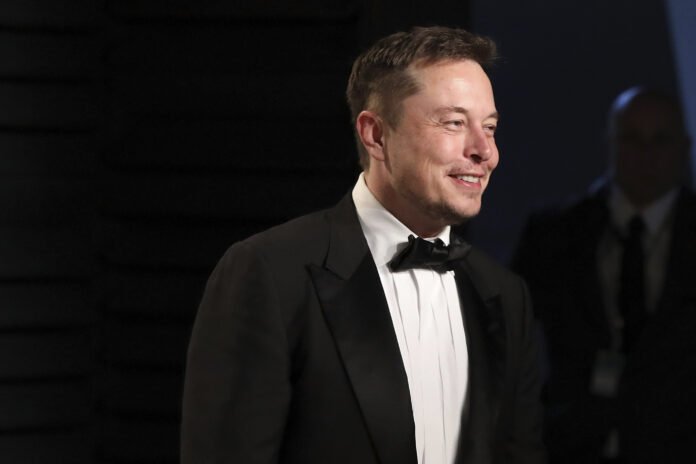

If you want to become a billionaire but were not born into the Saudi royal family, there are a few options for you. You may create a massive corporation from a single brilliant concept, such as a new computer operating system or social network. You might also follow Warren Buffet’s lead and make a succession of savvy, low-risk investments over a lengthy period, then watch the riches quietly dribble in. Then there are Elon Musk’s actions.
Unlike most of the prominent billionaires of today, Elon Musk made his money in a unique way. He didn’t just have one brilliant notion; he had dozens. And instead of making many smart, secure investments, he only made a few extraordinarily hazardous ones. Even if it wasn’t apparent to many people then, there was a method to his madness. Elon Musk is TIME’s 2021 Person of the Year because of his total of bets, which made him the wealthiest private individual on the globe this year and had a profound impact on society through privately-launched space missions and the electric vehicle industry’s scramble to catch up.
Elon Musk came from a wealthy household. He showed an early talent for computers by creating his own video game at 12. He moved to Canada when he was 17 to avoid serving in the military during the apartheid system in South Africa and enrolled at Queen’s University in Ontario. He changed schools in 1992 and enrolled at the University of Pennsylvania to study business and physics. Elon Musk may have also experienced his first taste of dangerous business endeavors on Penn’s tree-lined campus when he and a few buddies rented out an off-campus home and converted it into a nightclub.
After that, it was on to Silicon Valley and graduated from a school for a short while. Elon Musk applied to Stanford’s Ph.D. in physics but left after just two days. Elon Musk decided to try his luck as young businesspeople discovered that the internet, a cutting-edge network of computer connections, may be more than just a place for nerds to hang out. In the middle of the nineties, Elon Musk and his brother Kimbal established Zip2 as an online business directory, akin to web-enabled yellow pages with maps.
The firm, which struck agreements with publishers including the New York Times, was operated by Elon and Kimbal with the assistance of outside investors and managers. They exchanged $307 million for the Zip2 in 1999, selling it to Compaq, a once-dominant computer manufacturing company. The Zip2 transaction brought in a tidy $22 million for Elon Musk, who then spent $1 million on a McLaren F1 supercar. When the automobile was brought to Musk’s house, CNN was there to capture the moment and recorded Elon Musk saying, “It’s not consistent with the rest of my behavior.” In an attempt to demonstrate the car’s acceleration a year later, Elon Musk accidentally threw the vehicle into the air like a frisbee. The $1,000,000 sports automobile lacked insurance.
But by that point, Musk had moved on to his next project. On the day of the collision, Peter Thiel, co-founder of the payments business Confinity, was driving with him in the McLaren. (Musk and Thiel were unharmed in the collision.) Musk invested his millions in launching X.com, an internet banking firm. In March 2000, the two businesses would combine to establish the organization that would become PayPal. Musk was appointed CEO, but the board ousted him in September while he was on vacation, replacing him with Thiel, in part because of a dispute about changing the company’s servers. Musk would subsequently remark, “It’s not a good idea to leave the office when there are a lot of major things underway that are greatly stressing people.” However, Musk continued to own stock in the business. Musk made a huge fortune of $180 million when eBay acquired PayPal for $1.5 billion in 2002.
Musk ultimately chose not to unwind despite all the new things his new millions could purchase. He established SpaceX in 2002 with the seemingly absurd goal of populating Mars. The next year, he made a substantial first investment in Tesla, which at the time consisted of only two founders and a dream of electric sports vehicles, totaling more than $6 million. The business intended to modernize the floundering industry by utilizing new lithium-ion batteries, which were both light and energy-dense. Scaling up lithium-ion cells, one of Tesla’s key inventions, allowed it to produce an electric vehicle with a far larger range than previous electric vehicles had been able to. At the time, lithium-ion cells were only utilized in small electronic gadgets.
Both businesses had a challenging beginning in their early years; Musk claims he ultimately invested nearly all of the money from the sale of PayPal in the initiatives. SpaceX saw many unsuccessful launches that nearly caused the company to go out of business, while Tesla encountered issues once its engineers learned its prototype battery packs were prone to catching fire. According to former Tesla Chief Technical Officer J.B. Straubel, “If we couldn’t fix it, it was a discovery that could have killed the company.” Later, during the Great Recession in 2008, Tesla came dangerously close to bankruptcy.
Musk’s investments eventually started to pay dividends. SpaceX and NASA signed a $1.6 billion contract in 2008, and Tesla started producing the Model S, its first mass-market vehicle, in 2012. Tesla now dominates the American market for electric vehicles, holding around two-thirds of the market. Unquestionably, SpaceX is at the forefront of commercial space exploration.












